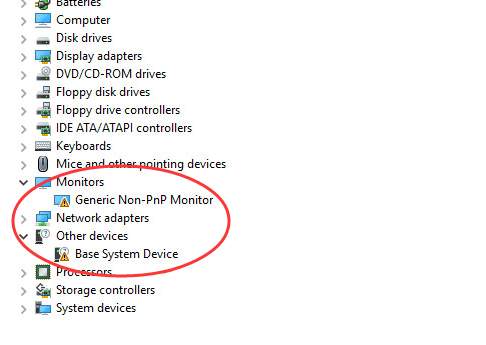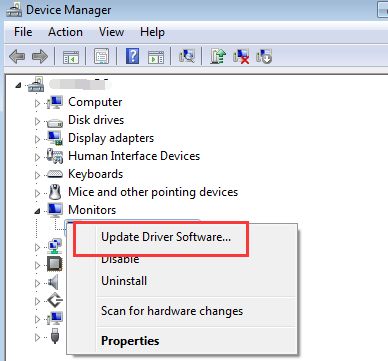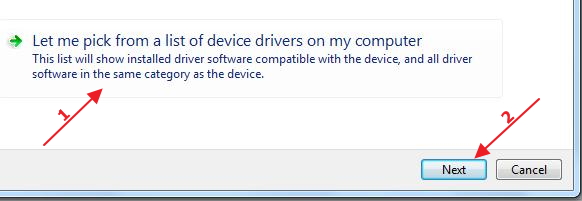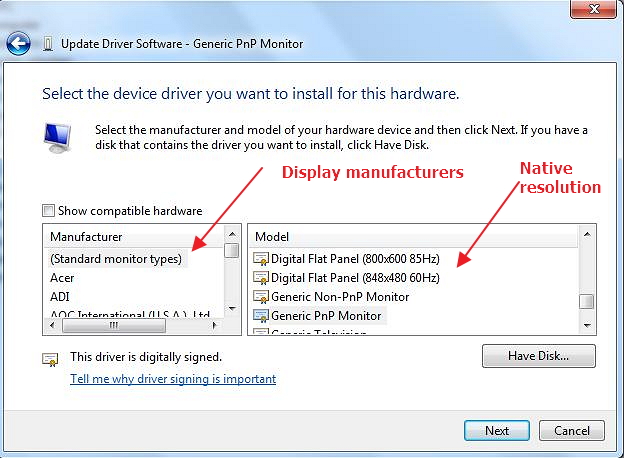Windows updates do not always go as planned and many unexpected problems crop up. One of the problems that many users have encountered is display driver goes missing and the Device Manager shows a generic PnP monitor. Let’s see more about this problem in detail.
What is Generic PnP and why does it matter?
Generic PnP monitor means your computer is using generic drivers for the display attached. Though it may not seem a problem, it does have some drawbacks.
If you are accessing video streaming websites like Netflix, watching HD movies or playing games, you might see the screen freeze with a constant tone. Also, Generic Plug n Play monitor supports a maximum resolution of 1024 x 768 even when the native resolution supported by your monitor may be higher (1080 p or higher).
The reason for this problem is your computer is not using monitor drivers (particular to the model) that you had installed. Instead, it is using generic drivers and your display is categorized as Plug n Play monitor with no access to additional settings. That means you would not be able to set the resolution of the screen nor the refresh rate, which is important for gaming or video streaming.
If you check the Device Manager, you would see a yellow exclamation mark beside the generic PnP monitor entry indicating the right driver for the monitor is not installed.
Now let’s look at the solutions to resolve this issue.

We have provided you with two solutions that could fix the generic PnP monitor issue. You don’t need to try both solutions.
The best way to start is to perform the troubleshooting steps in Solution One. If it does not resolve the issue, only then move to Solution two.
Solution One- Update Driver through Device Manager
- Press Windows logo key and R simultaneously on the keyboard to bring up the Run command console
- In Run command box, type devmgmt.msc and click OK
- In the Device Manager window, go to Monitors category and expand it
- right-click Generic PnP monitor and choose Update Driver Software

- In the next window, click Search automatically for updated driver software

Windows will now search for drive online. In most cases, Windows fails to find the right driver. In that case, you need to try another way to update display drivers.
- Go to Monitors category again and right-click Generic PnP monitor
- Click Update Driver Software
- In the next window, click Browse my computer for driver software

- Click Let me pick from the list of device drivers on my computer

- See whether Show compatible hardware option is checked. If there is check in the box, click the box to uncheck
- Now you can see a list of manufacturers in left pane and Models in the left pane
- Select the display manufacturer and then select the right native resolution supported by the display

- Click Next and follow on-screen instructions to install display drivers
- Close all windows
If this method of updating driver does not work for you, move to the next solution.
Solution Two- Use Driver Update Tool to update display drivers
Automatic driver update tools offer many benefits, the most important ones being:
- You can update device drivers automatically
- The software scans and updates all outdated or missing drivers at one go
- The tool picks the right drivers for your device and operating system, so you won’t have to worry about installing an incorrect driver by mistake
- Automatic driver updates are 100% safe
Driver Updater is one of the best driver update tools out there. Outbyte Driver Updater will give you access to a database of over 1 million drivers. It will regularly scan your PC, suggesting new driver versions to install. Driver Updater contains drivers for a variety of Windows devices. With just one click, you can update drivers in your system.
Step 1
Click here to Install and launch the app
Step 2
Scan all devices
Step 3
Install or update drivers automatically

Pat G says
I am using a flat tv monitor with my computer and have no idea what kind of monitor I should click on to correct the boot up problems I am having. I believe it has to do with the generic driver updates because I get a blue screen message that ask if I want to boot up with the generic drives or press esc to boot up with defaults. I been trying to find out how to set my computer to boot up with defaults? can and will you help me please.